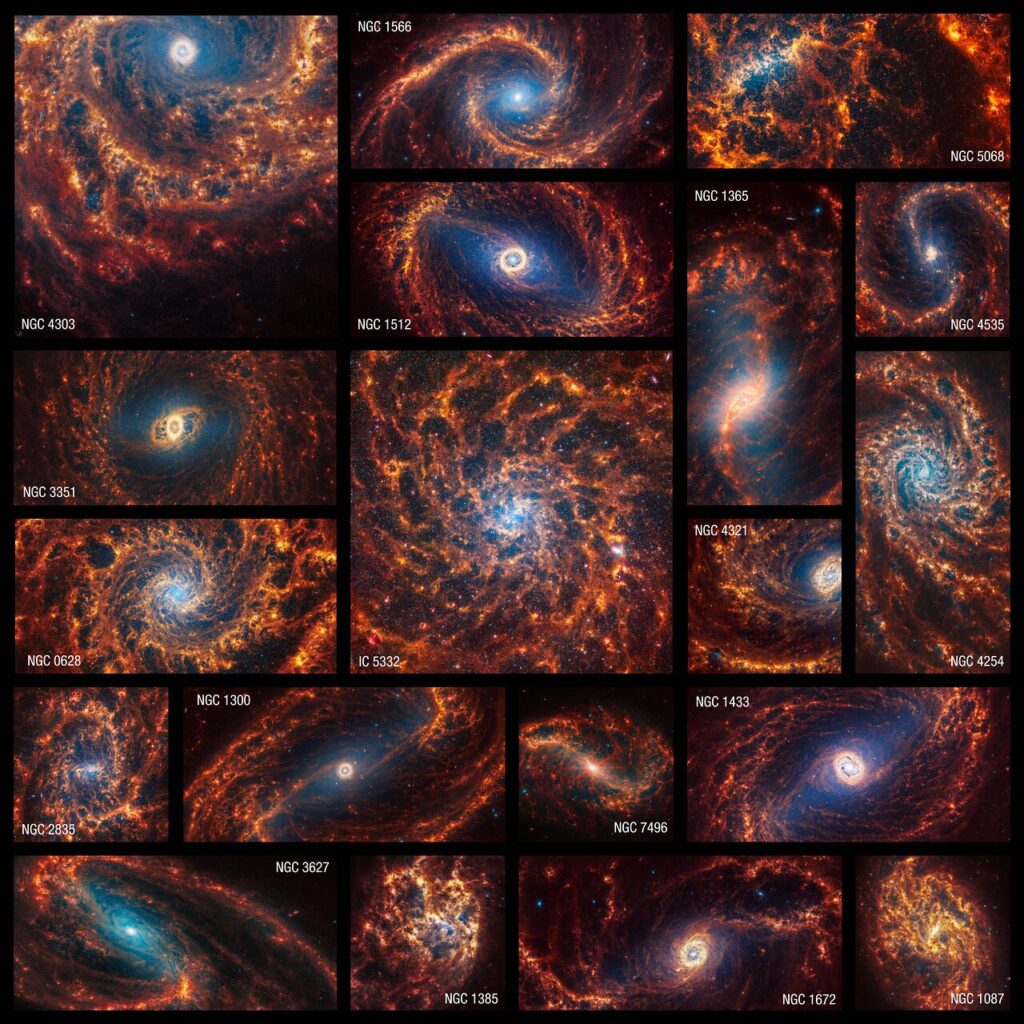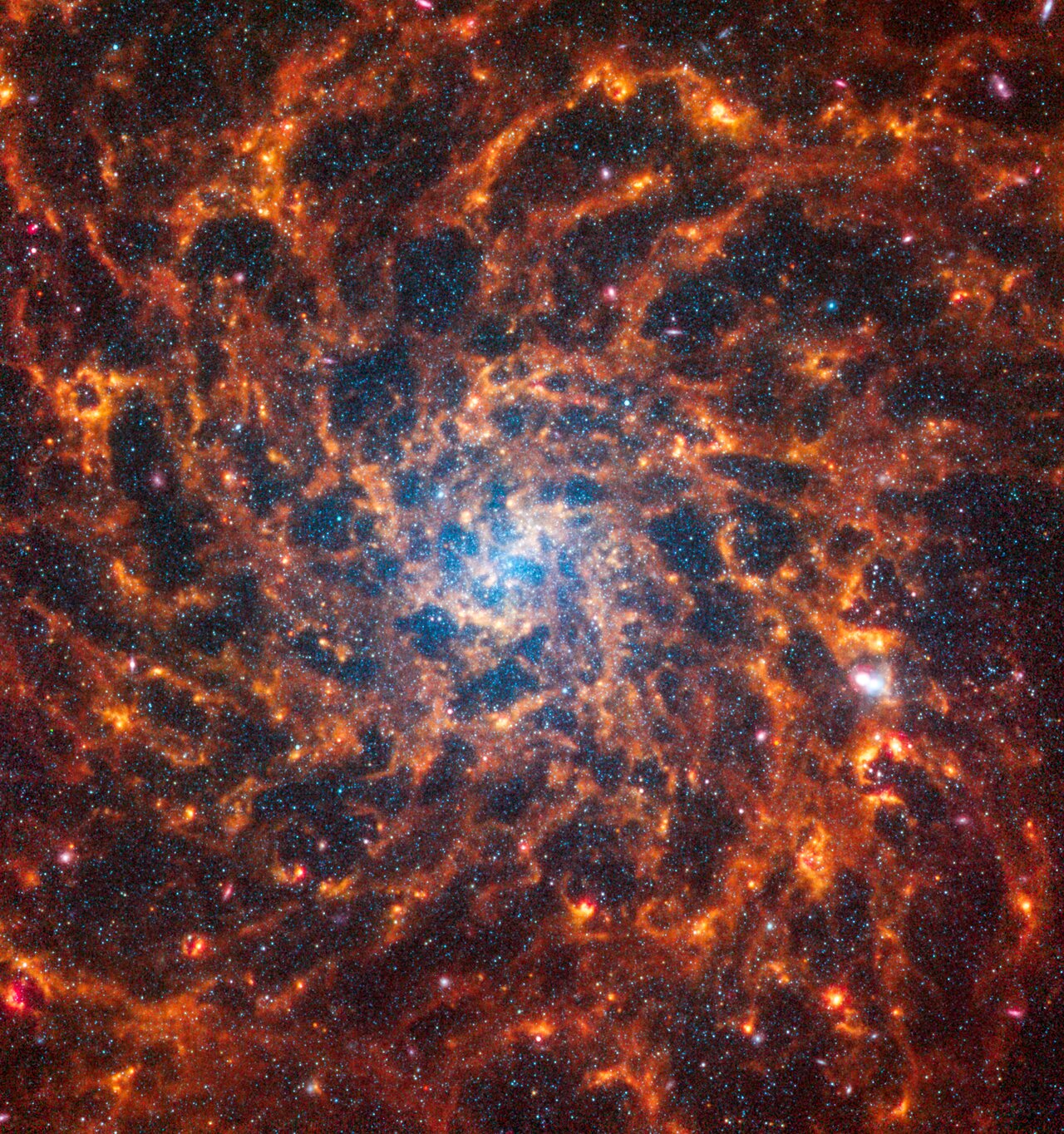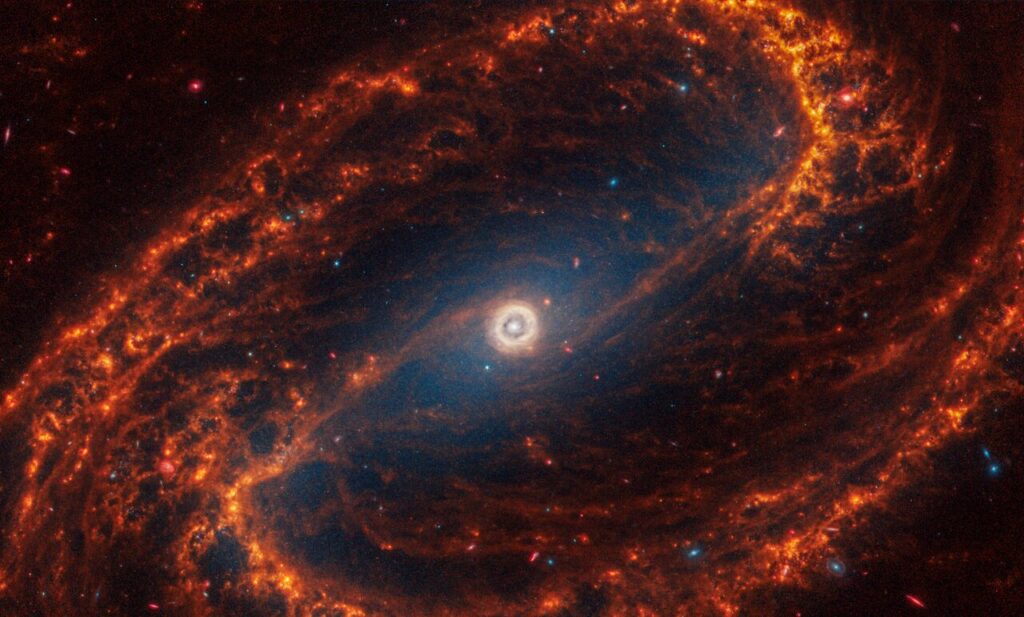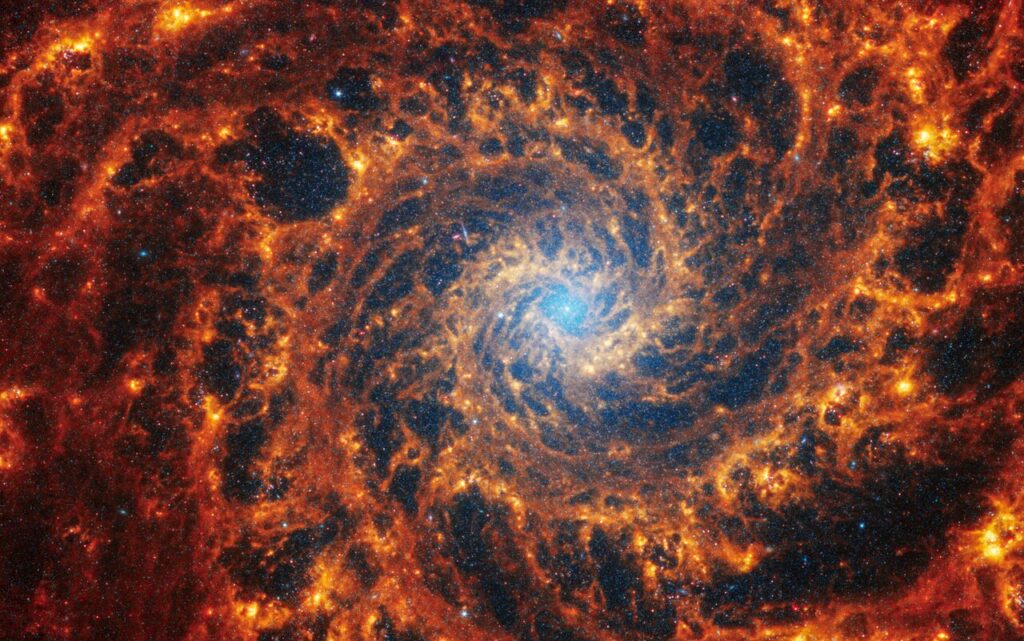Astronomers have published a new series of images taken with the James Webb Space Telescope (JWST). They show infrared portraits of 19 spiral galaxies facing us.

The pictures were taken as part of the PHANGS project. Within its framework, astronomers study nearby galaxies to understand exactly how they evolved and how their stellar population was formed. The unique ability of JWST to conduct observations in the near and middle infrared range allows it to penetrate through the dust curtain and study their structures.
In total, JWST has studied 19 spiral galaxies. The images taken by the telescope show the gas and dust filling the galaxies on the smallest scale ever observed outside our Milky Way.
Stars, dust and spiral arms
The NIRCam installed on JWST captured millions of stars that shimmer in blue tones in the published images. Some luminaries are scattered along spiral arms, others are tightly pressed together in star clusters.

Data from the MIRI camera showed the distribution of luminous dust filling the space between the stars. In addition, it managed to capture the not fully formed luminaries. They are still encased in gas-dust cocoons, which serve as a source of building materials for them.

To the surprise of astronomers, the JWST images also show large spherical gas-dust shells. Perhaps these are the remnants of supernovae.

In general, the data available to astronomers suggests that galaxies grow from within. Star formation begins in the nuclei and spreads along their arms, spiraling away from the center. The further away a star is from the galactic core, the more likely that it is younger. In contrast, the areas in blue tones near the cores are populations of older stars. Supermassive black holes are hidden in the cores.
Follow us on Twitter to get the most interesting space news in time
https://twitter.com/ust_magazin


